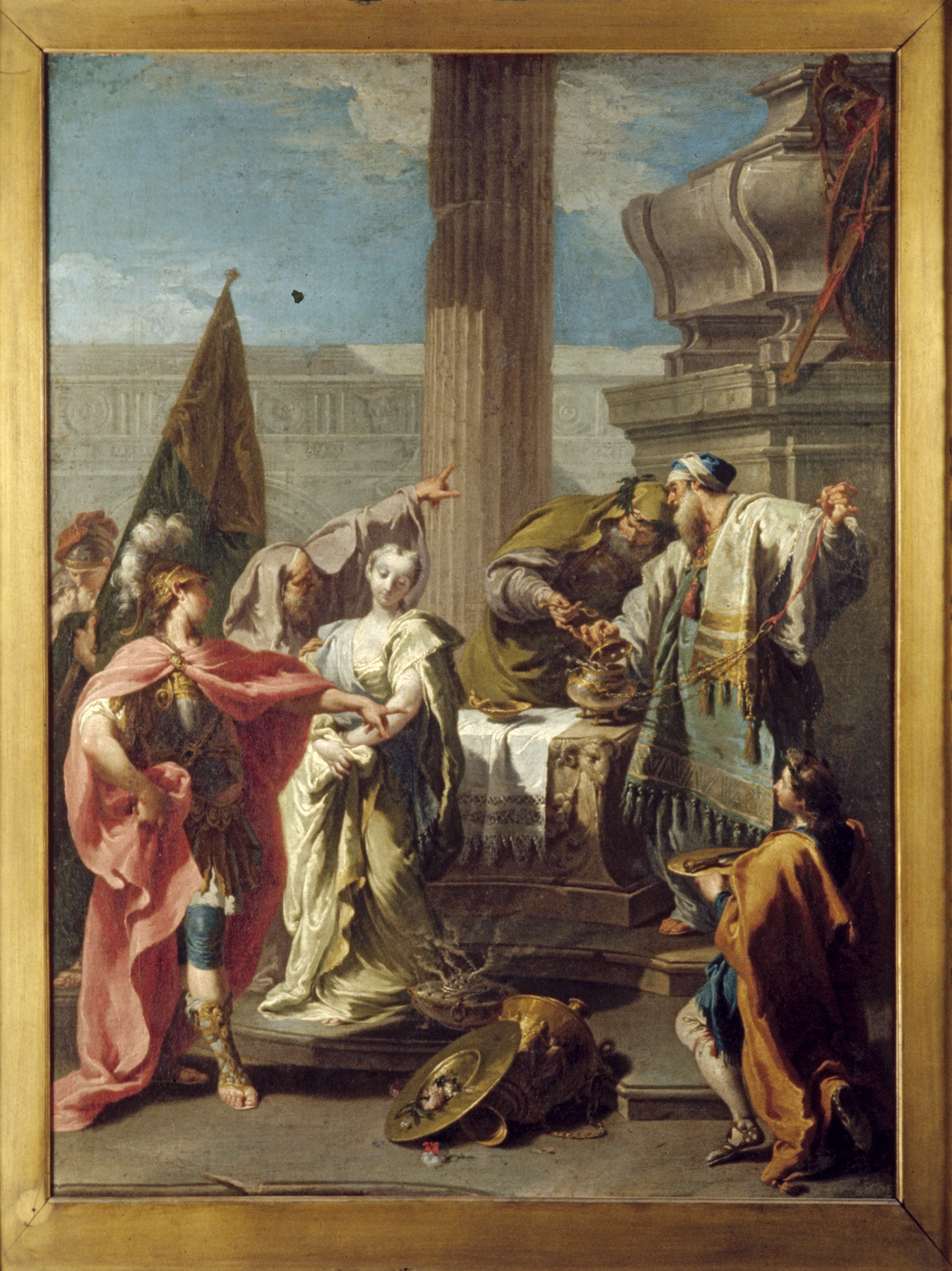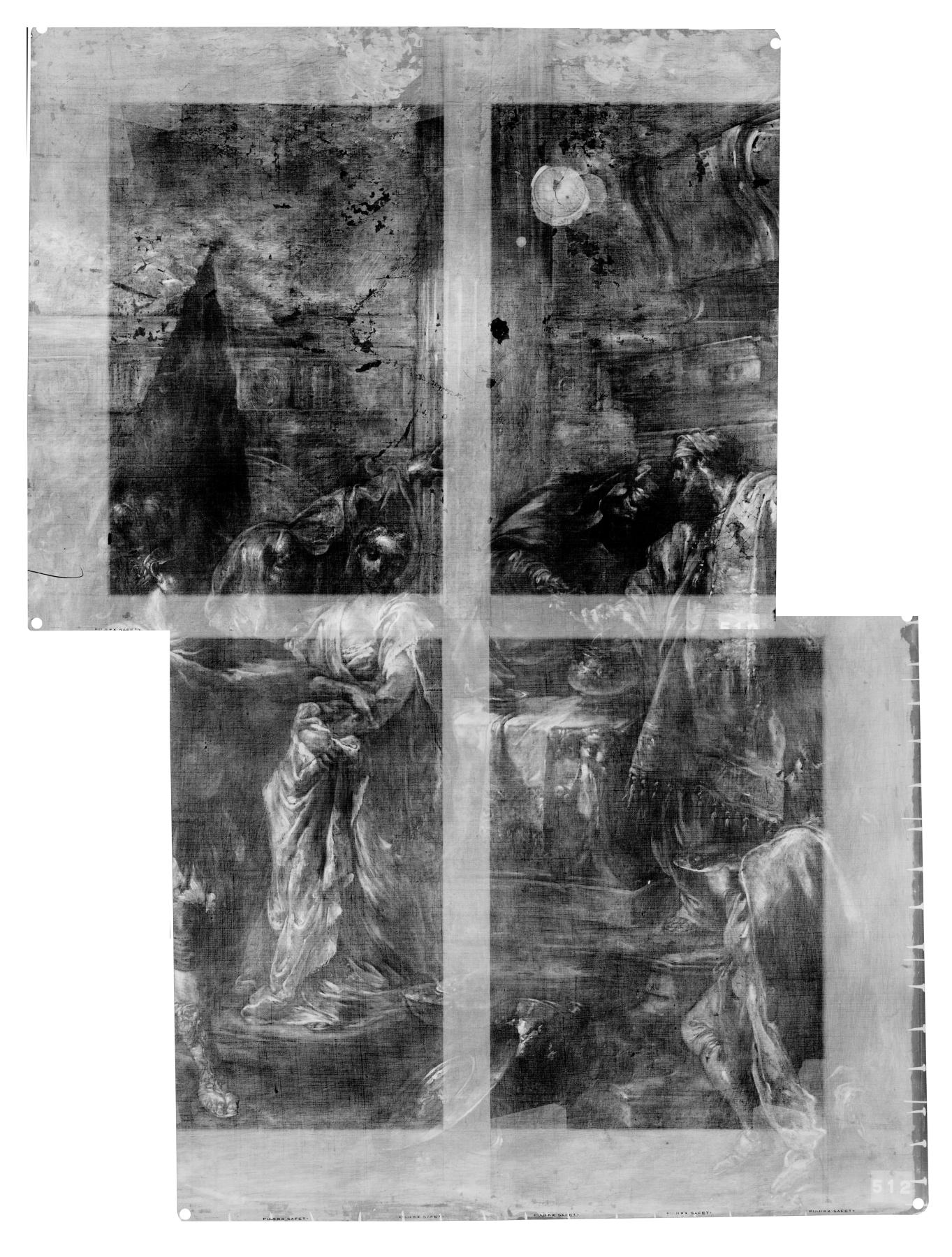The Sacrifice of Polyxena at the Tomb of Achilles
(Baroque Europe )
The tragic moment depicted is from the end of the Trojan War. According to legend, the ghost of the Greek hero Achilles demanded that the Trojan princess Polyxena be sacrificed at his tomb. Achilles's son, with the feathered helmet, is leading the sacrifice. According to the Roman poet Ovid, Polyxena "kept her look of dauntless courage until the end." In visualizing this passage, the painter has depicted the young woman with a sorrowful yet dignified expression that conveys her bravery in the face of death.
The ballet-like elegance of the figures is characteristic of 18th-century Venetian history painting, as is the delight in exotic elements, such as the costumes and ritual objects of the pagan priests.
For more information on this painting, please see Federico Zeri's 1976 catalogue no. 450, pp. 561-562.
Inscription
Provenance
Provenance (from the French provenir, 'to come from/forth') is the chronology of the ownership, custody, or location of a historical object. Learn more about provenance at the Walters.
Glaenzer and Co., New York [date and mode of acquisition unknown]; Henry Walters, Baltimore, 1907 (?) [mode of acquisition unknown]; Walters Art Mueseum, 1931, by bequest.
Exhibitions
| 1996 | Tiepolo Unveiled: The Restoration of a Masterpiece. The Walters Art Gallery, Baltimore. |
| 1939 | The Greek Tradition in Painting and the Minor Arts. Baltimore Museum of Art, Baltimore. |
Conservation
| Date | Description | Narrative |
|---|---|---|
| 1/4/1937 | Treatment | cleaned; loss compensation; x-ray |
| 1/28/1974 | Treatment | coated; filled; inpainted; loss compensation; varnish removed or reduced; x-ray |
Geographies
Italy, Venice (Place of Origin)
Measurements
Painted surface H: 27 9/16 x W: 20 3/8 in. (70 x 51.8 cm)
Credit Line
Acquired by Henry Walters, 1907 (?)
Location in Museum
Accession Number
In libraries, galleries, museums, and archives, an accession number is a unique identifier assigned to each object in the collection.
In libraries, galleries, museums, and archives, an accession number is a unique identifier assigned to each object in the collection.
37.512




